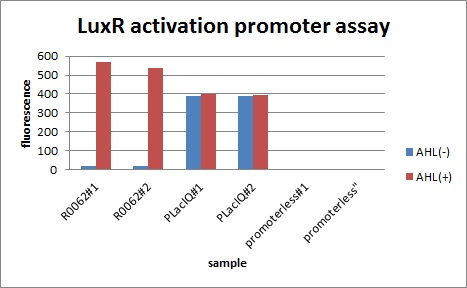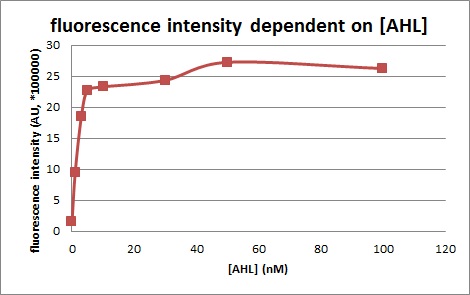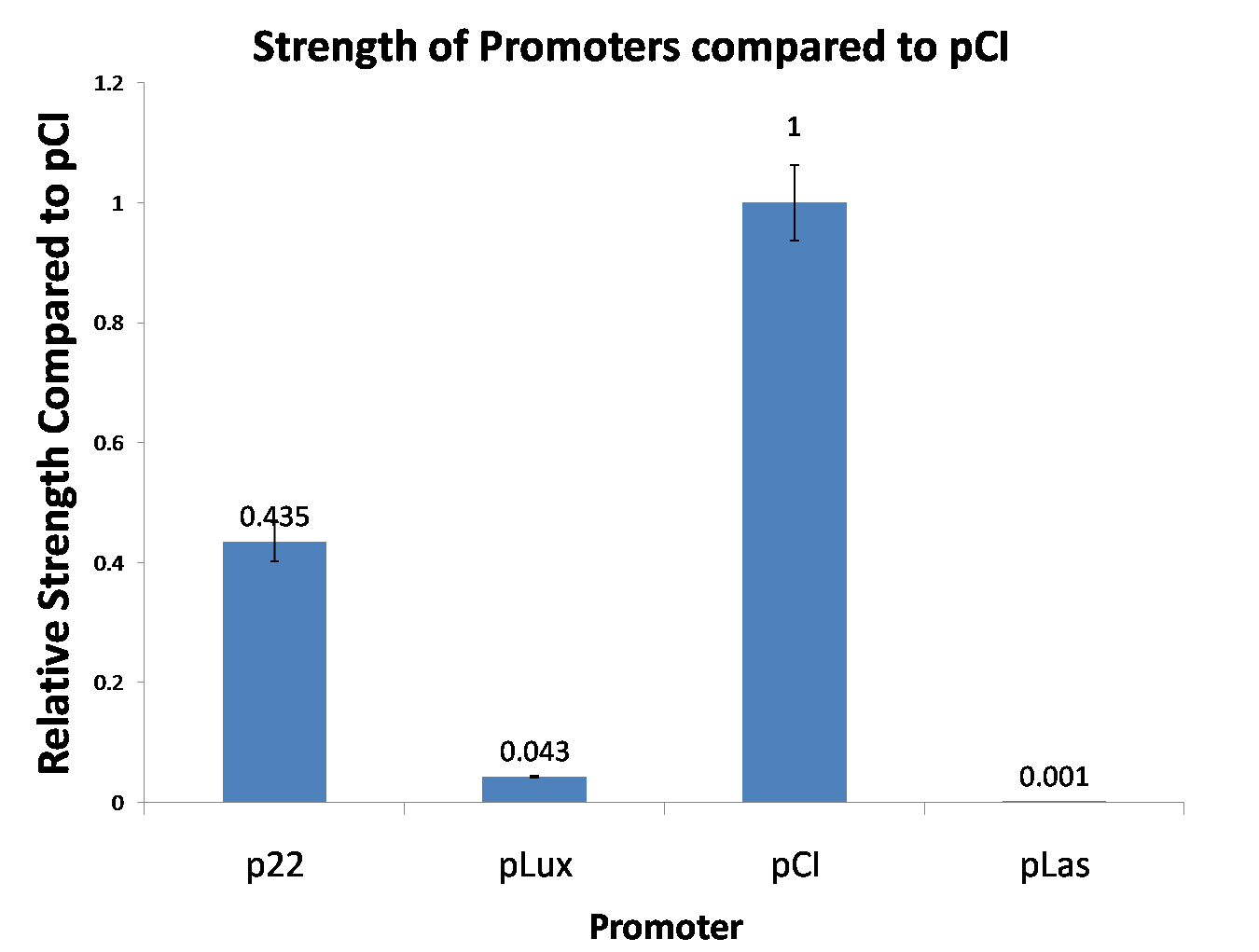This experience page is provided so that any user may enter their experience using this part.
Please enter
how you used this part and how it worked out.
Applications of BBa_R0062
User Reviews
UNIQceb2aa3be8ee2069-partinfo-00000000-QINU
|
No review score entered.
iGEM Tokyo_Tech 2010
|
In order to characterize R0062, Plux repression promoter, we constructed K395100 combining R0062 and K121013, which is a promoter-less gfp reporter (rbs-gfp-ter-ter) on pSB6A1 and used a fusion of PlacIq (I14032) to gfp (K121013) as a positive control and used promoterless gfp (K121013) as a negative control.
Overnight cultures of reporter strains grown at 37 °C containing appropriated antibiotics were diluted at least 1:100 and incubated at 37 °C as fresh cultures. After their OD590 reached 0.6, added 100nM 3OC6HSL. After 3 hours of induction, fluorescence intensity was measured with flow cytometry. Also, we measured the fluorescence intensity under different concentration of 3OC6HSL (0nM, 1nM, 3nM, 5nM, 10nM, 30nM, 50nM, 100nM by flow cytometry 3 hours after 3OC6HSL induction.
After 3 hours of induction by 3OC6HSL, the expression of GFP with 3OC6HSL around 30 holds increased comparing with the expression without 3OC6HSL. Also, we found fluorescence intensity of luxR activation promoter is dependent on 3OC6HSL concentration. The threshold of fluorescence intensity of R0062, luxR activation promoter regulated by 3OC6HSL is around 5nM.
(→[http://2010.igem.org/Team:Tokyo_Tech/Project/Artificial_Cooperation_System/lux_act_rep more information])


|
;
|
Antiquity
|
This review comes from the old result system and indicates that this part did not work in some test.
|
|
•••••
wmholtz
|
Using this part, I have successfully constructed and tested a quorum sensing circuit in E. coli.
|
|
•••
Aberdeen_Scotland 2009
|
Our miniprep, digest and gel gave expected results. However we did not use this part for our cloning.
|
|
No review score entered.
NYMU-Taipei 2009
|
 |
We have characterised the strength of the promoters pCI, p22, pLux, pLas relative to pCI. Has a noticeable basal expression level. More details are available at the [http://2009.igem.org/Team:NYMU-Taipei/Project/Promoter_Strength_Testing NYMU-Taipei iGEM09 wiki].
|
|
;
UNIQceb2aa3be8ee2069-partinfo-00000006-QINU

 1 Registry Star
1 Registry Star

